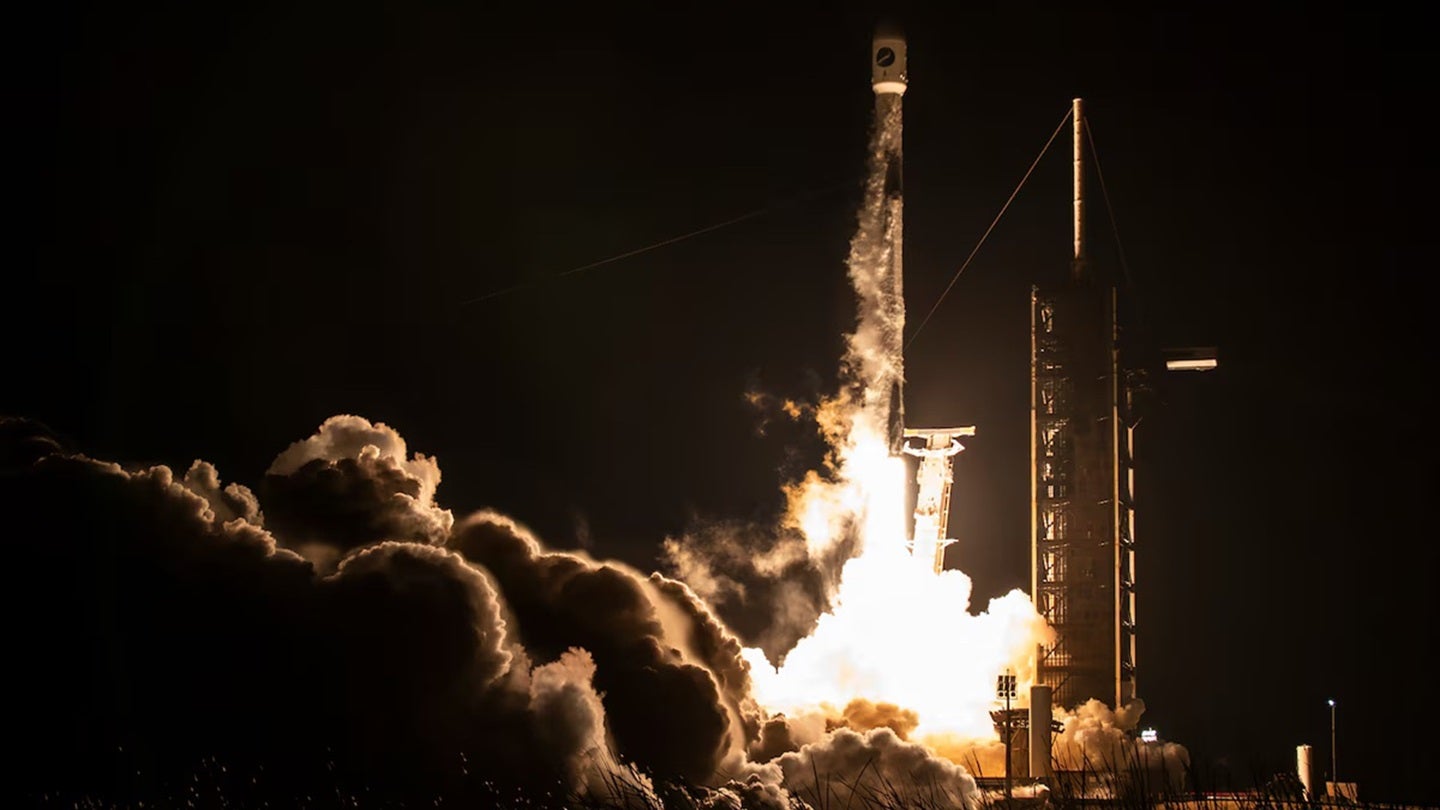The US Space Force’s (USSF) Boeing-built X-37B Orbital Test Vehicle (OTV) lifted off on its eighth mission aboard a SpaceX Falcon 9 rocket from Kennedy Space Center in Florida.
The vehicle is “healthy” on orbit and “proceeding with standard checkout”, Boeing said.

Discover B2B Marketing That Performs
Combine business intelligence and editorial excellence to reach engaged professionals across 36 leading media platforms.
Find out more
Enhancements to the X-37B include a Boeing-developed integrated service module designed to augment the vehicle’s payload capacity, enabling more extensive experimentation while in orbit.
Boeing Space and Mission Systems vice president Michelle Parker said: “Our role is to make sure the spaceplane is the most reliable testbed it can be. None of this happens without teamwork. Launch is the starting line for this mission, but the work that follows – the quiet, methodical work on orbit, analysis and eventual return is where progress is earned.”
On its current mission, the X-37B is carrying out multiple technology demonstrations in collaboration with government agencies.
These include experiments with laser communications and a quantum inertial sensor aimed at providing navigation solutions when GPS is not accessible.
Space Launch Delta 45 commander colonel Brian Chatman said: “X-37B continues to prove itself as a premier testing platform aiding in experiments to better understand our future in space.
“These experiments, X-37B itself, and Space Launch Delta 45’s ability to perform fast, flexible launches all play crucial roles in bolstering our resilience and enhancing our ability to swiftly adapt to the challenges in space of today and tomorrow.”
This latest mission comes on the heels of the X-37B’s seventh mission, where the vehicle performed an aerobraking manoeuvre to alter its orbit while conserving fuel.
Launched in October last year, the mission concluded with a landing at Vandenberg Space Force Base in California on 7 March 2025.
The X-37B project is a collaborative effort between government and industry, spearheaded by the US Air Force Rapid Capabilities Office and managed operationally by the USSF.
Teams from Boeing located in Seal Beach, California, and Kennedy Space Center are responsible for designing, constructing, integrating, and operating this versatile spaceplane.
Since its inaugural flight in 2010, the X-37B has spent over 4,200 days in orbit.
Each mission concludes with a return to Earth for thorough inspection and necessary upgrades.
Chatman added: “The data we gather from the X-37B speeds decisions, hardens our architectures, and helps Guardians stay connected and on course even in contested environments. This is how we move from promising ideas to fieldable capability at pace.”

